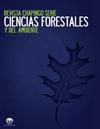生长调节剂对地方性和濒危棘球蟹外植体诱导体细胞胚胎的影响。
IF 0.6
4区 农林科学
Q3 Agricultural and Biological Sciences
Revista Chapingo Serie Ciencias Forestales Y Del Ambiente
Pub Date : 2021-08-31
DOI:10.5154/r.rchscfa.2020.08.053
引用次数: 0
摘要
简介:濒危物种的名单正在加强,需要通过将植物组织培养工具与支持对这些物种进行适当管理的传统技术相结合来进行修订。目的:评价生长调节剂对仙人掌成熟种子、芽和紧密绿色愈伤组织诱导体细胞胚的作用。以及胚胎发生结构的组织学分析。材料和方法:采用完全随机设计,对三种类型的外植体(顶端、培养基和基底)在具有不同生长调节剂浓度(2,4-D[二氯苯氧基乙酸]、BAP[6-苄氨基嘌呤]和激动素,四个水平:0.5、1、1.5和2 mg∙L-1)的基底Murashige&Skoog培养基(MS)上培养进行评估。对胚胎发生结构进行了组织学分析。结果与讨论:2,4-D从种子和外植体上诱导了胚性和器官性愈伤组织。球状阶段没有进化到它们的成熟,可能是因为2-4 D的积累。当在含有0.5mg∙L-1激动素的培养基中培养时,紧凑的愈伤组织外植体每外植体诱导19.2个体细胞胚的效率更高。然而,最新的阶段没有发芽,可能是由于DNA的遗传和表观遗传学变化产生的异常,这可能会导致异常的体细胞胚胎。组织学图像显示,在显微镜下可见球状和鱼雷状结构,显示染色的细胞核和大量淀粉颗粒。结论:E.parri是一个能产生大量胚胎性结构的物种,具有巨大的生长潜力。本文章由计算机程序翻译,如有差异,请以英文原文为准。
Effects of the growth regulators for the induction of somatic embryos from explants in an endemic and threatened Echinocactus parryi Engelm.
Introduction: The list of threatened species is enhancing and needs to be revised by integrating plant tissue culture tools with conventional techniques that support the appropriate management of these species. Objective: To assess the effects of the growth regulators for the induction of somatic embryos from mature seeds, shoots, and compact green callus of Echinocactus parryi Engelm. and the histological analysis of the embryogenic structures. Materials and methods: A completely randomized design was utilized to evaluate three types of explants (apical, medium, and basal) cultured on basal Murashige & Skoog media (MS) with different growth regulators concentrations (2, 4-D [dichlorophenoxy acetic acid], BAP [6-benzylaminopurine] and kinetin, at four levels: 0.5, 1, 1.5, and 2 mg∙L -1 ). Histological analysis of the embryogenic structures was performed. Results and discussion: The 2, 4-D induced both embryogenic and organogenic callus from seeds and shoot explants. The globular stage did not evolve to their maturity, presumably because of 2, 4-D accumulation. The compact callus explants were the more efficient to induce 19.2 somatic embryos per explant when they were cultured in the medium with 0.5 mg∙L -1 kinetin. However, the latest phases did not germinate, probably due to abnormalities generated by genetic and epigenetic changes in the DNA that can cause abnormal somatic embryos. The histology image demonstrated that the globular and torpedo structures were visible under a microscope showing stained nucleus and numerous starch grains. Conclusions: E. parryi is a species that can produce a high number of embryogenic structures, which represents a great potential to grow massive plants.
求助全文
通过发布文献求助,成功后即可免费获取论文全文。
去求助
来源期刊
CiteScore
1.20
自引率
16.70%
发文量
0
审稿时长
>12 weeks
期刊介绍:
The Revista Chapingo Serie Ciencias Forestales y del Ambiente (RCHSCFA) is a scientific journal that aims to raise awareness of high-quality research products related to forest, arid, temperate and tropical environments in the world. Since its foundation in 1994, the RCHSCFA has served as a space for scientific dissemination and discussion at a national and international level among academics, researchers, undergraduate and graduate students, forest managers and public/private entities that are interested in the forest environment.
All content published in the journal first goes through a strict triple-blind review process and is published in the following formats: Scientific Articles, Review Articles, Methodologies, Technical or Technological Notes.

 求助内容:
求助内容: 应助结果提醒方式:
应助结果提醒方式:


